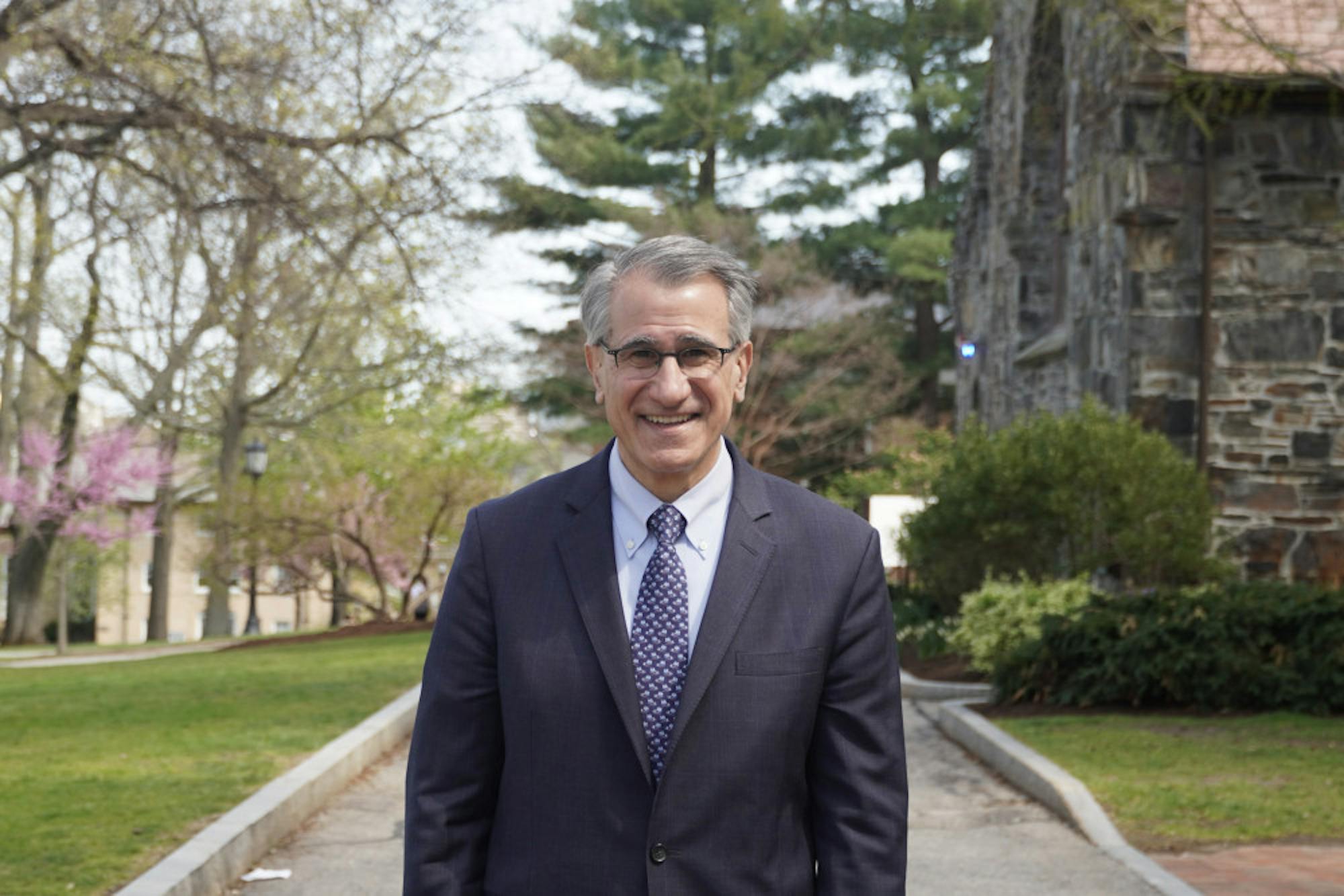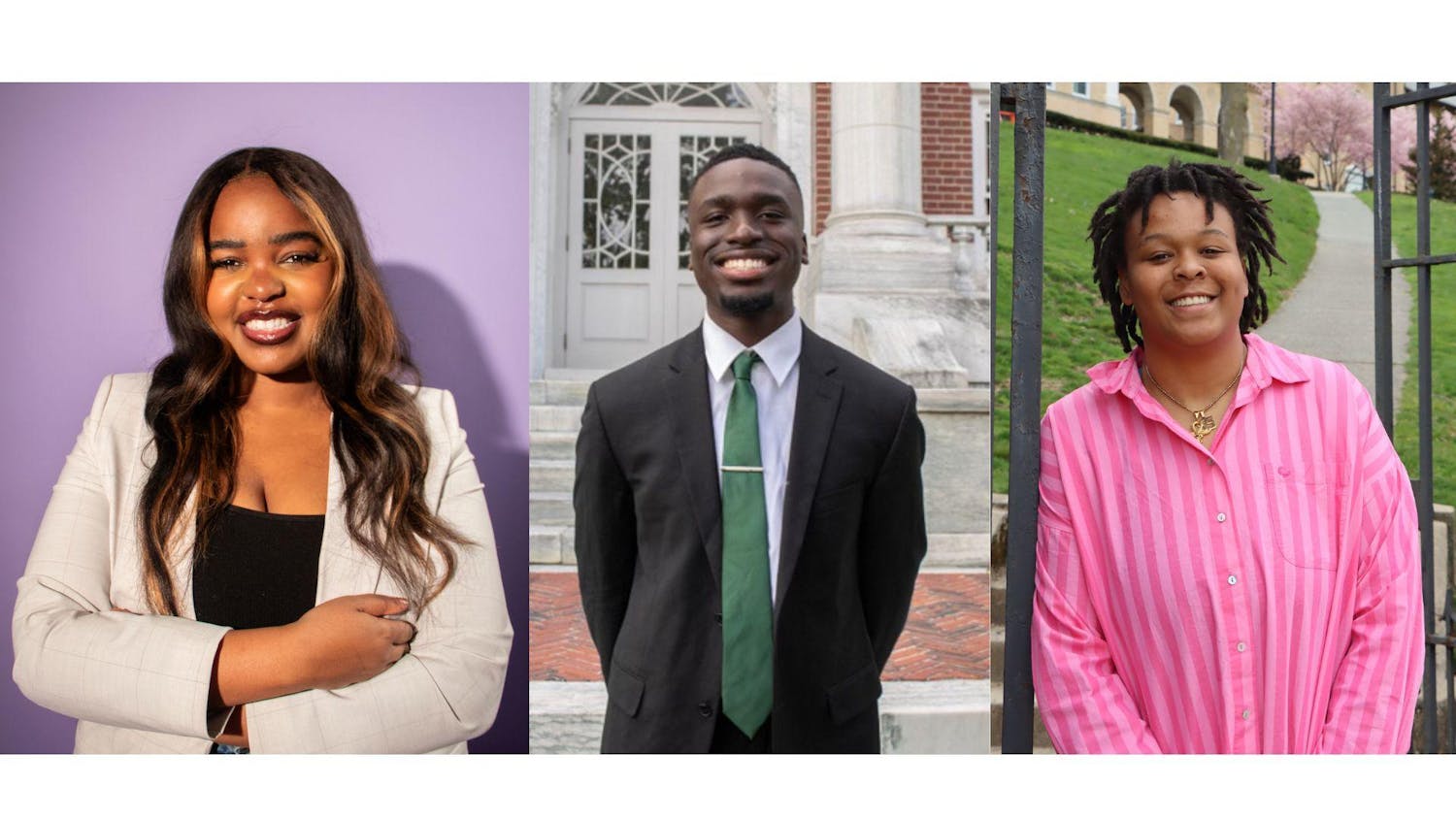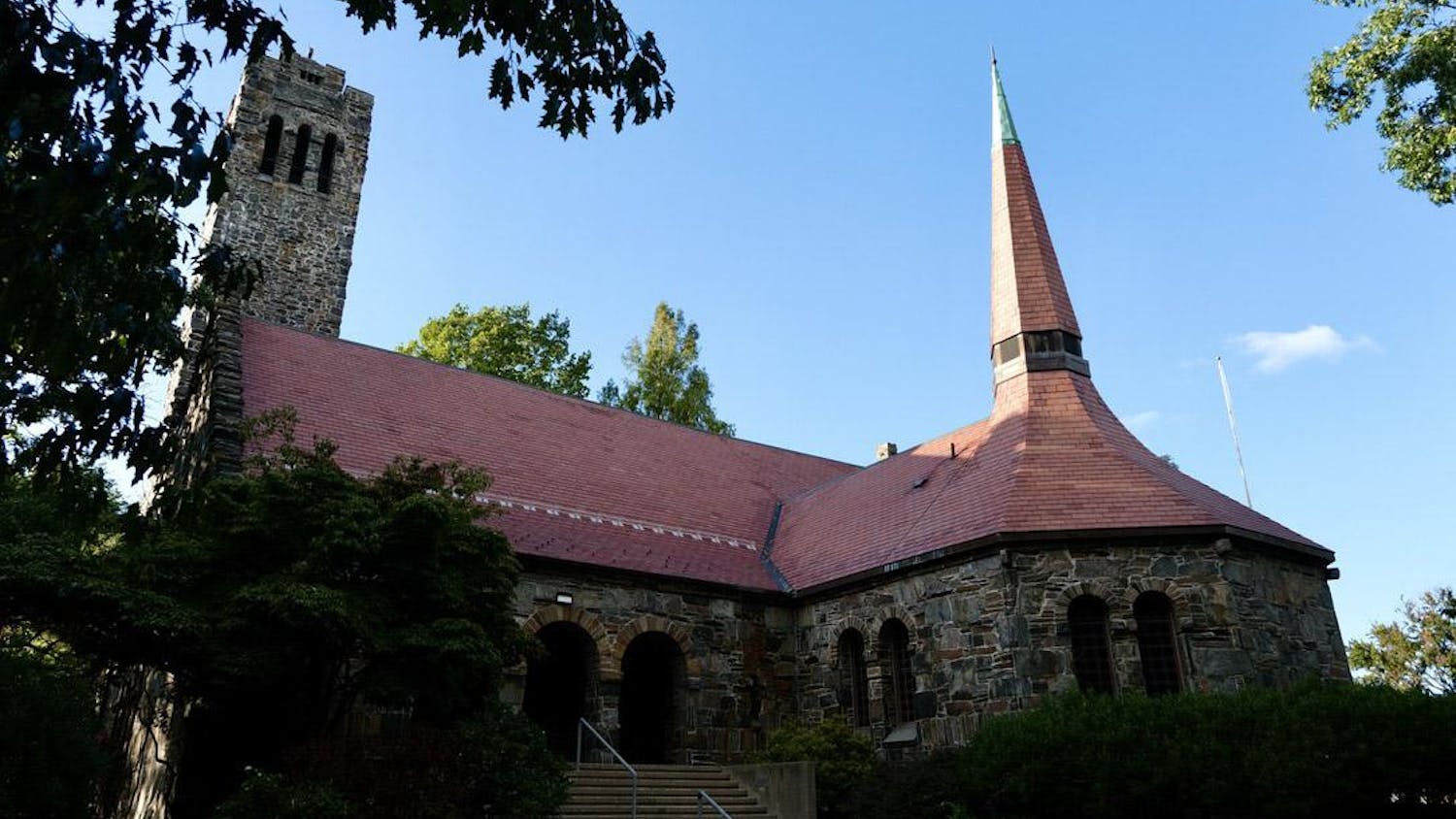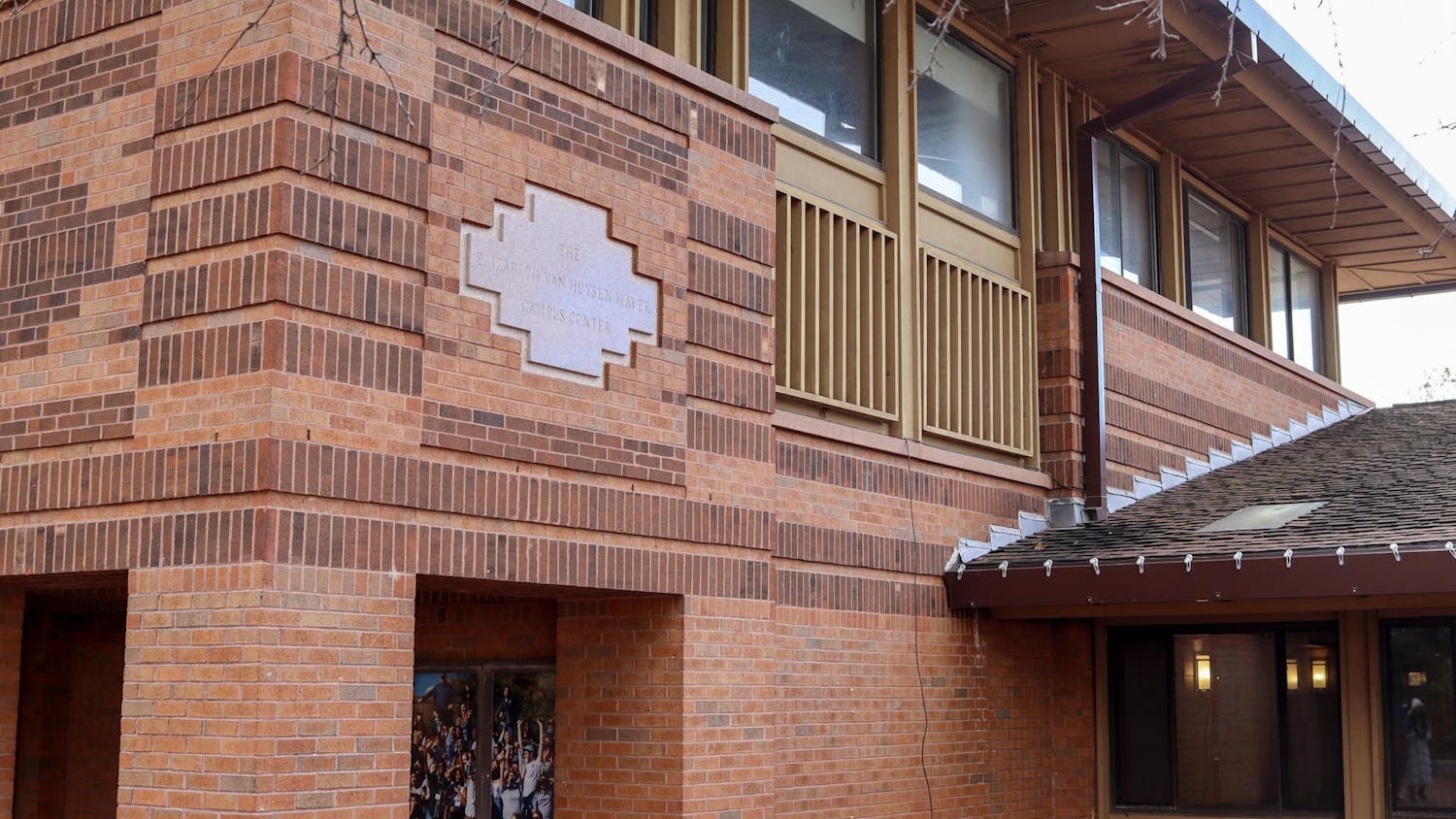University President Anthony Monaco sat down with the Daily to discuss Tufts’ ongoing expansion, pandemic response, mental health and diversity, among other topics. Monaco also offered updates on the university’s finances and outlined his goals for the remaining year of his presidency.
Editor’s note: This interview has been edited for length and clarity.
The Tufts Daily (TD): What have been the most significant accomplishments and challenges Tufts has faced this year?
Anthony Monaco (AM): Well, let's start with successes. COVID-19 obviously was a challenge, but at the same time, I think it was also a success for our community because we were able to keep operating in person and tried to respond flexibly to the changing conditions. That allowed a lot of the awards ceremonies and other traditions that we've missed for two years to happen. I think that was really great to see the university coming into a new normal.
Also, despite the pandemic, we did keep some of our very important capital projects going to improve facilities. The Joyce Cummings Center is a stellar example of that; it’s being used now quite actively by the whole community. Athletics had some improvements: Ellis Oval was turfed and we’re planning projects around baseball and tennis.
The other success is that despite the pandemic, we’ve been able to manage our finances well by staying open, and that has put us in a much better economic state coming into the uncertainty of inflation and possible recession going forward. The Brighter World Campaigncontinues to be on track, and we have one more year to reach our goal of $1.5 billion, supporting students, faculty and staff. It’s great to see that despite the pandemic, our alumni, donors and friends have not stopped supporting us and our mission.
We also had a lot of new leadership: Caroline Genco is the provost ad interim, Helen Boucher is the ad interim dean of the medical school and also a part of Tufts Medicine as the chief academic officer. We’re working with the deans of The Fletcher School, Tisch College, the SMFA and the School of Engineering as they are making transitions.
On the diversity, equity, justice and inclusion front, we’re continuing to push on the anti-racism initiative. One of the significant events was the Leading While Black event, where we recognized Black leaders who helped make Tufts what it is today. We had the opening of the Indigenous Center, as well as recommendations and reports on policing, leading to a new arming policy as well as a hybrid response policy. Also related to DEIJ, but more specifically related to admissions and financial aid, we had the largest and most diverse applicant pool ever and the most selective admitted class ever, and the quality of diversity is just breaking all kinds of our records. To help us with that, we’ve had a large gift of $25 million from the Schuler Access Initiative, and that will really help us provide support for Pell Grant eligible students and students with DACA and undocumented status.
Finally, our research continues to garner national and international acclaim, particularly in some areas where we have unique capabilities, like nutrition. It was just announced this week that The Friedman School of Nutrition Science and Policy and Dean Dariush Mozaffarian will be helping to lead a White House conference on nutrition, which hasn’t happened in more than 50 years, since Jean Mayer. We’re really pleased that David Kaplan has been getting acclaim for his work in cellular agriculture. As you would expect in a time of a pandemic, our faculty working on infectious diseases have done very well in garnering grants to support more research.
I think one of the biggest challenges, especially this spring, was the painful losses in our community of both students, faculty and senior administrators with the passing of the incoming Dean of the School of the Museum of Fine Arts Margaret Rose Vendryes; Danielle Abrams, a faculty member; Sheldon Krimsky, a longtime faculty member here; as well as losing a student, Cher Xiong. Our community had to manage the grief and the painful loss by coming together.
There continues to be a challenge to the campus climate around issues that are difficult to discuss. The polarization in the country plays out on our campus. The polarization comes out in issues around discussing Palestine and Israel. That sometimes stretches into antisemitism. Also, we need to continue to combat racism, but we have made great strides.
We also had a challenge this year of higher enrollment, which was due to a higher yield than we had expected. We had to work through that by addressing the dining and housing consequences.
I would also say because of COVID-19, because of the loss of members of our community and the general sense of isolation coming out of the pandemic, mental health challenges continue to be real. We’re trying to respond to them with increased resources and flexibility.
Lastly, I’d say the economy is a challenge, looking ahead to inflation and a possible recession. And there is the hiring challenge: With many staff members deciding to retire, it’s been hard to get staff in all of our positions as we usually do.
TD: You mentioned the economy and potential recession. How does that affect higher education?
AM:First, we borrowed money to build the new dorm and to complete other major capital projects. Construction inflation is probably near 10%, so the longer you delay in using that money the less value it has, so the dollars that we have for capital may not go as far. Inflation cuts into our salary pool, so we’ll have to react by increasing salaries appropriately, but it’s hard to increase tuition to make up for that because we want to keep tuition as low as possible. That’s a challenge, but since we did well during the pandemic, we now have a cushion of positive margin and that cushion could help us in the next couple of years. The other way we can manage it is drawing on the endowment, but with the cushion we have, I don't think that'll be necessary.
TD: Is the university’s current rate of growth sustainable? Do we have the space and resources to provide a high-quality college experience to every undergraduate?
AM: We had a plan to grow the undergraduate population by 50 to 100 students per year to get up to an eventual student body of around 6,600. Last year, the yield was higher than we expected and we overenrolled and had to put people in temporary hotel accommodations. We’ve managed it better this year in terms of being conservative in how many offers we make. Because of that, we can slow the growth this year to make up for the extra growth last year, and then we will pick up our plan to get to 6,600.
The reason we want to grow the undergraduate population is to increase access. We feel that a Tufts education could be accessible to more students, especially since we also have more financial aid to offer. The experience here is very rich and transformative, and it’s a shame not to be able to offer it to more people, provided we can keep the faculty to students to staff ratios the same and keep the experience the same. To do that we have to invest, and that’s what we’re doing in the areas of housing and dining. We created a lot of accommodation within wood-frame houses and by renovating different dorms and configuring them better.
We also will be adding temporary housing for 150 students. The reason that is needed is because we’re going to build a new dorm on Boston Avenue — if all the approvals go through — which will house 350 to 400 upperclassmen. During that project, we will have to take some beds offline in the adjacent dorms because of the noise and disruption from construction, and that's what the Vouté courts will be used for. They will be modular units, but we will build them and specify what we want. The ones we got previously were just what we could get at that time, but these will be proper dorms with common rooms, kitchens and more.
We’re also continuing to convert wood-frame houses and different campus residences to add beds over the next couple of years. We hope that by investing in dining infrastructure and expanding that capacity, as well as building the new dorm and building and renovating other smaller units, we will keep up with the growth in students. We want to get more students on campus; that is the plan.
TD: What has the university been doing and what will it continue to do to support the mental health of Tufts community members?
AM: Mental health is a particular priority for me personally, because it’s an area that I do research on. I knew that rates were going up before the pandemic and had already started a task force. The idea was to review all of our resources and also what best practices could we institute or add because the rates of mental health disorders are going up. We finished that work and then created a steering committee which met almost monthly during the pandemic to constantly monitor our situation. Some of the immediate, tangible steps we’ve taken is that Counseling and Mental Health Services really worked to increase access, not only through their own counselors but also through other providers to expand the number of appointments. We used peer education around mental health so that students were better informed of where the resources were and what it all meant, and how they could navigate things when they had particular problems.
We partnered with the Division of Student Diversity and Inclusion and the identity centers to offer programs that were tailored to the students in those communities and offered grants of up to $500 for students, staff or faculty to fund different mental health and wellness projects.
Just as significantly, we implemented university-wide neuropsychology testing, which is necessary for anyone with particular mental health disorders or learning disabilities. They need the testing in order to get their academic accommodations, but it’s quite an involved process, it’s expensive, and some insurance providers don’t cover it. Over 18 months we had 20 students already take advantage of our pilot program and receive a report, which is then used to help them navigate which accommodations they need.
Also, the Massachusetts college and university presidents have been meeting regularly to discuss mental health issues, and we’re trying to learn from each other and institute more practices. It’s always good to talk to your peers, so you don’t feel like you’re experiencing this on your own.
TD: This semester, both the TCU Senate and the Faculty Senate each voted to eliminate the legacy question in our undergraduate admissions process. Is that something the university is looking at?
AM: The legacy consideration as a part of admissions is really something that each school decides for itself based on its own context. The Graduate School of Arts and Sciences doesn’t ask about family affiliation in its application, but the undergraduate school does. Our medical school no longer asks about family affiliation. So each school has tried to analyze it and make a decision for themselves. Deans Glaser and Lee have asked the dean of admissions to conduct such a study for the legacy question on undergraduate admissions. They need to look at data to better understand the implications, and then they’ll put a recommendation forward for us to review. They’ll do the work this summer. If it’s going to happen, we just want to understand what the implications are.
TD: Could you tell us about the progress that has been made in the Tufts as an Anti-Racist Institution initiative?
AM: The first success is that we’ve been able to increase the diversity of the incoming class due to more financial aid and the larger applicant pool among undergraduates. We’re also making grounds in the compositional diversity of students across our professional schools. However, we need to do more on faculty and staff diversity, and we’re putting a large focus on faculty and putting funding forward for cluster hires and other mechanisms to bring more faculty of color, particularly in the STEM subjects, where we’re not doing as well on compositional diversity.
The other area where we are progressing is putting capacity and infrastructure into diversity efforts. Now the provost’s office is hiring a vice president for DEIJ who will be looking at issues around racism.
I think the training and education — particularly of search committees and students who are coming to the university for the first time — is really important in changing our culture toward becoming an anti-racist institution. And so our recruitment and hiring practices, faculty search and promotion processes are undergoing education and training so that we can work on that particular area of possible bias.
We have always had a diversity and inclusion leadership council, which I chair, but we have now two oversight or advisory councils — one on anti-racism and one on antisemitism — made up of faculty and staff from across the university to advise the senior team.
TD: From an administrative perspective, what might the next phase of the university’s pandemic response look like?
AM: We are now in a new normal, and what’s good about it is we can start functioning more in person without the risk of hospitalization and death. Originally, by meeting in person, you would be putting people at risk of hospitalization. Now, with the vaccines and the boosters and protocols, we were able to conduct ourselves in a way that allowed morale to improve. We would like to keep it that way, but we will have to make decisions like requiring masks and testing depending on how the different variants come through and how severe they are.
If they’re like the variants we have now and they’re less severe, we can manage that with our current protocols, but if they come back next year and are more virulent and make people more sick, then we will have to take some more serious measures.
TD: What’s the current state of the university’s financial health? How’s the endowment doing broadly?
AM: We had a really impressive return last year, almost a 40% return. This year the market has been much choppier. As of a month ago, we were about the same level we were year on year. So it hasn’t lost any value, but it hasn’t gained any either. However, it had a 40% return the year before and I’ve seen that many times where you’ll have an amazing return one year and the next year it’s flat, so on average, the two together make a more average return.
Regarding fossil fuel investments, we’re no longer investing directly in coal and tar sand companies, and we’re taking steps to reduce indirect investments, but our indirect exposure is only 0.7% of the endowment. We’re trying to reduce that while also increasing the amount of money we put into social impact investing, including solar and other technologies. So far, we have about $18 billion invested in that. The idea is we keep expanding that and reduce the other one.
Regarding Russian investment, we don’t have any direct Russian exposure. And through our commingled funds, it’s 0.2% — much less than even fossil fuels. We’ll work with our managers of those funds to see what they’re doing to reduce exposure.
TD: What does it mean for Tufts to reduce indirect exposure? How does that work?
AM: Let’s say you give a fund $10–20 million of the endowment to invest, so they go away and they do that. And then they might say, “We have another fund starting, and we would like you to put another chunk with us since we’ve done well for you here.” When they do that analysis, we can put pressure on them at that point because we can say, “What is this new fund? We’re not decided yet. We want our funds to have these goals.” We don’t want investments in fossil fuels, so that’s the point of decision. If they’re not willing to change, then the Investment Office has to make a decision on whether they move on and look at another fund.
We can put pressure from our side every time a fund comes back and asks us to reinvest. We can tell them what our goals are, and if they’re not matching them, then we will move on and find another investment. I think that’s why it’s slow progress, because once you’ve given the funds the money you can’t turn around and say, “I don’t like the way you’re investing that 10% or 5% of it.”
TD: You announced earlier this semester that you will be stepping down from your position in summer 2023. Could you tell us a bit about your hopes for the final year of your presidency?
AM: There's still a lot of work to be done in the next year or so. We want to continue the work on anti-racism and antisemitism and other forms of discrimination. We want to finish up the Brighter World campaign so we can raise the funds to resource many of our initiatives. Then there’s the Tufts Medicine initiative: Our medical school is now aligned with Tufts Medical Center and its partner hospitals in a new endeavor to bring our research together under one roof, offer new educational programs and to brand it as a Tufts University partnership with Tufts Medicine. We believe it’s really important for the future of the medical school and also biomedical research at Tufts more generally. I want to make sure, with Caroline Genco and Helen Boucher and our partners at Tufts Medicine, that this really solidifies in the next year and then makes its impact. The new residence hall is also a big priority.
TD: What will your next steps be after Tufts?
AM: I haven’t thought that far ahead, but right now, I’m very focused on the mental health disorder crisis in this country — trying to understand the causes and possible interventions, trying to make things better. At least for the near future, that’ll be my primary focus. I’ll be doing this work with my scientific hat on. But I don’t know beyond that what I’ll be doing.
TD: We heard from a trusted source that over the course of the pandemic, you befriended some of the rabbits who live around Gifford House. Can you tell us about that?
AM: Well, I befriended all the animals in the garden. It’s enclosed and it’s got tall pine trees, so it’s a nesting site for blue jays and northern cardinals, robins, squirrels, doves and rabbits, and so I slowly got to know all of them. I have names for all of them. They recognize me, and the rabbits all eat out of my hand. There’s Mama Doe, Papa Doe, Junior, Quarter Pint, Half Pint, White Nose, Little One, Little Two, I can keep going. They all have distinguishing marks and personalities. Some are more eager to interact with you and others are more reticent.






